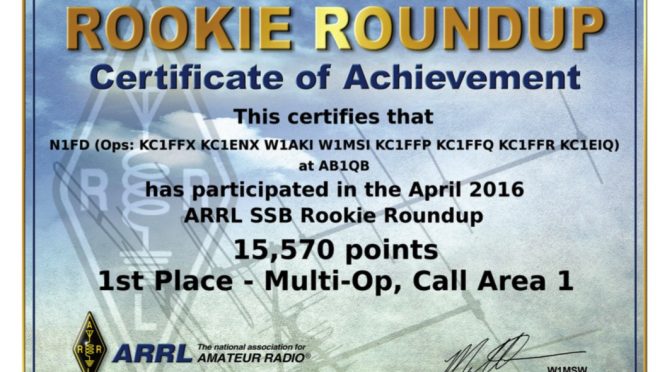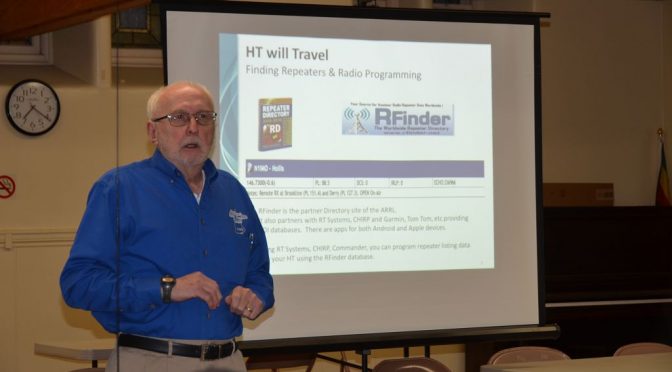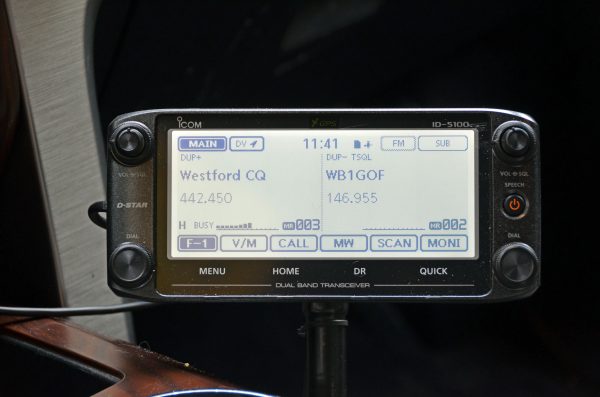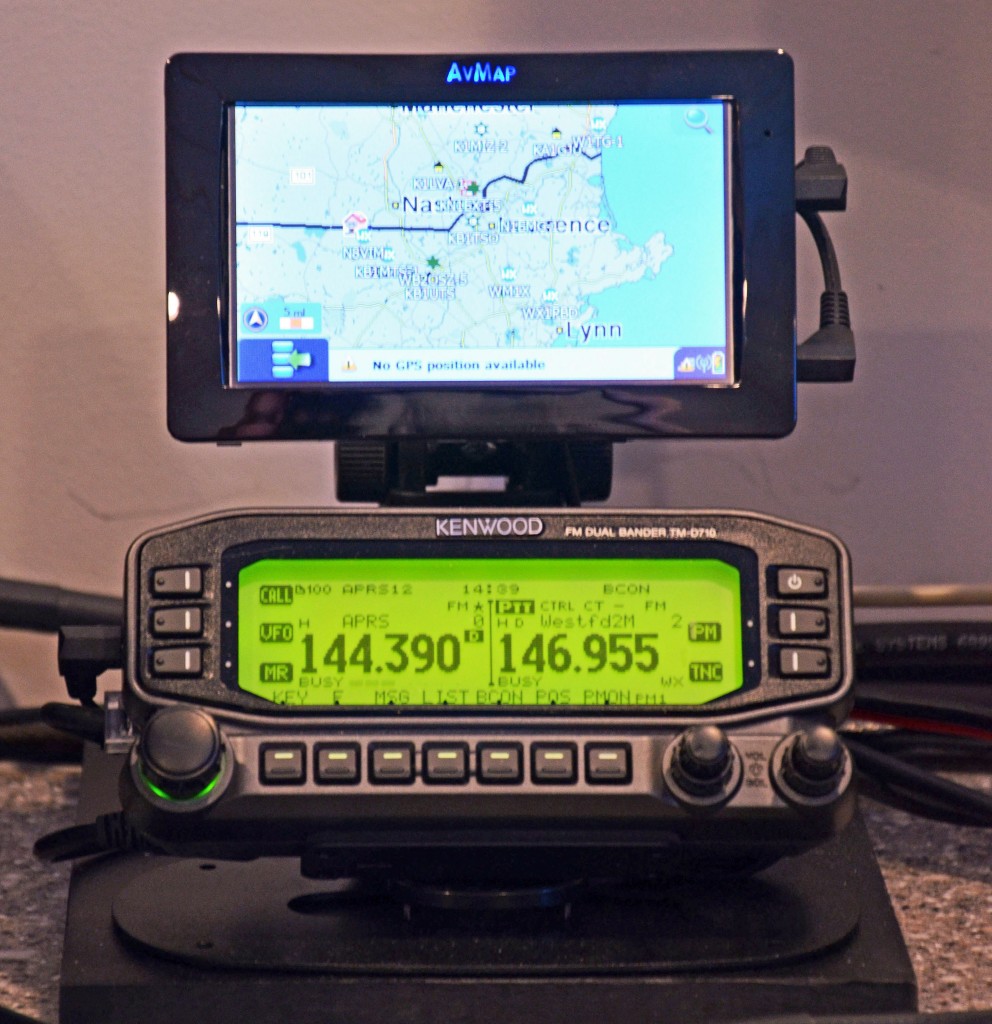
It’s almost time for the 2016 Field Day Event and we’ve been in high gear getting ready. We will be setting up at the Hollis-Brookline High School in Hollis this year. The Featured image for this article shows a satellite view of the site. We have already held two Field Day Planning Meetings and many club members have volunteered to help with our Field Day Operation for this year. You can read the latest about our Field Day plans in the Field Day Forum here on our site. Our club was very active in WRT2014 and we were able to purchase several of the WRTC station and tower kits from that effort.
In preparation for Field Day each year, we like to set up our station kit in our backyard to verify that all of our equipment is ready and in good working order. The first step is always to pitch the wall tent from the WRTC kit. The tent and the associated tables/chairs can comfortably hold 3 – 4 people.

We will be using the new IC-7300 Transceiver for Field Day this year. As you can see from the pictures from last year, we used an Elecraft KX3 Transceiver in 2015 along with an outboard KXPA100 100W Amplifier to bring the station up to 100W and Elecraft’s PX3 Panadapter. The either of these combinations makes a great 100W Field Day Station as does any good 100W transceiver that can be operated from 13.8Vdc power.

We’ve also used a Behringer HA400 four channel headphone amplifier (the unit on the right on top of the power supply) with our Field Day setup. This enables connection of a total of 4 sets of headphones to the station – one for the operator, one for a logger and two more pairs for folks to listen in on the fun. Our club has been doing a great deal of outreach to encourage new HAMs to join the hobby and we built this setup so that some of the new folks can listen in on our operation more easily. We will be using a Heil Pro 7 headset to operate and we will have 3 sets of Heil Pro Set 3 headphones for others to use. The Heil gear is very comfortable, light weight and sound great over the air.

We will again be using the N1MM+ Logger for Field Day. It is very easy to set up N1MM+ to work with the IC-7300 or the KX3. We will be doing an N1MM+ demo and training at our June Tech Night session to help others in our club to get going on the N1MM+ logger.

One of the many great aspects of Field Day is that it requires those who participate to test their emergency equipment and field operating skills each year. Our club has a large generator and power distribution system that we all share for Field Day. We use our station test session as a reason to get our smaller generators out for a test run. We have a pair of Honda EU2000 generators which can be used together to generate quite a bit of power.
Our club has quite a bit of antenna equipment and we will be putting up two 40 ft towers and tri-band beams with Triplexes and Filters for our 20m, 15m and 10m SSB and CW stations. We are planning a 40m Delta Loop array for our club to use for 40m and we’ll also be putting up 40m and 80m inverted-V and dipole antennas.
I hope that everyone in our club will join in on the Field Day fun again this year.
Fred, AB1OC
Hashtags: #ARRLFD #N1FD











